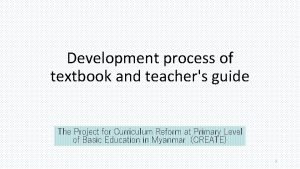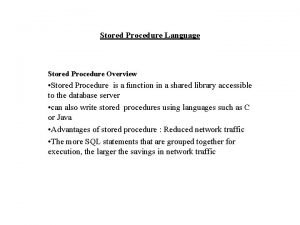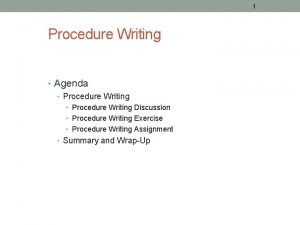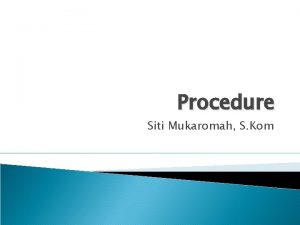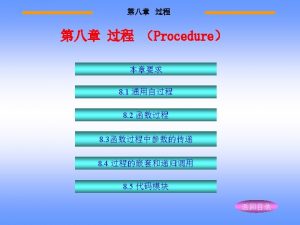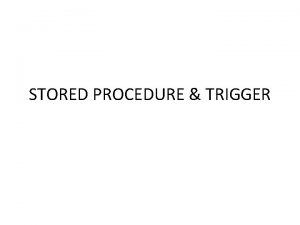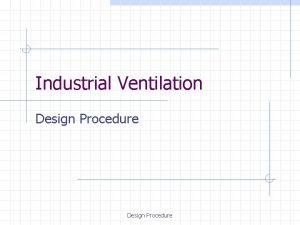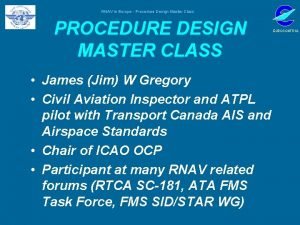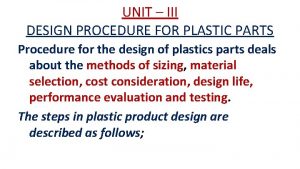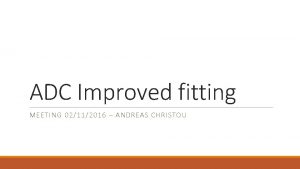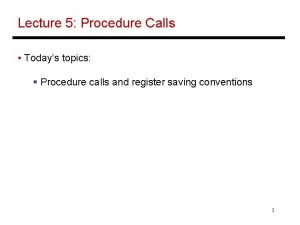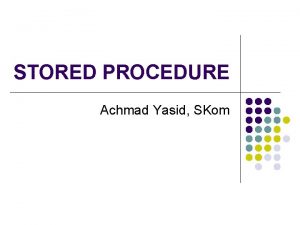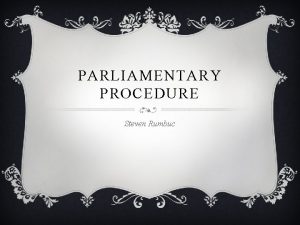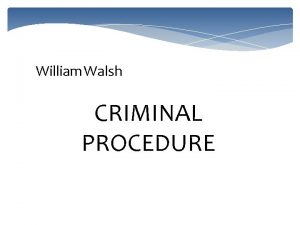TPF5169 Development of an Improved Design Procedure for



























































- Slides: 59

TPF(5)-169: Development of an Improved Design Procedure for Unbonded Concrete Overlays Lev Khazanovich, Ph. D Julie M. Vandenbossche, Ph. D, PE Steven G. Sachs, Ph. D May 23, 2019 NRRA Pavement Worlshop

Unbonded Overlays Concrete overlay Interlayer Existing concrete pavement University of Pittsburgh Department of Civil and Environmental Engineering 2

TPF-5(269) Development of an Improved Design Procedure for Unbonded Concrete Overlays Original Project • University of Minnesota (PI: Lev Khazanovich) • University of Pittsburgh (co-PI: Julie Vandenbossche) • Dr. Mark Snyder (consultant) Since November 2017 • University of Pittsburgh (Lev Khazanovich and Julie Vandenbossche) • Dr. Mark Snyder (consultant) University of Pittsburgh Department of Civil and Environmental Engineering 3

Design Procedures University of Pittsburgh Department of Civil and Environmental Engineering 4

MEPDG • Adopted MEPDG performance prediction models for new pavements • Empirical stiffness reduction factors for distresses in the existing pavement • CBD: Coefficient Reduction Factor for existing pavement • 0. 42 to 0. 75 for “Good” condition • 0. 22 to 0. 42 for “Moderate” condition • 0. 042 to 0. 22 for “Severe” condition University of Pittsburgh Department of Civil and Environmental Engineering 5

MEPDG Structural Model • Modeled as newly constructed JPCP • Joints in the overlay match joints in the existing slab • Deflection basins of the overlay and the existing pavements are the same • Interlayer deterioration is ignored University of Pittsburgh Department of Civil and Environmental Engineering 6

Pavement ME Example • Location: Rochester, MN • Design life: 20 years • Traffic: • Two-way initial AADTT: 8, 000 • Linear yearly increase: 3. 0% • Axle spectrum: Pavement ME default • Existing pavement: • Thickness: 8 in • Modulus of elasticity: 4, 000 psi • Interlayer thickness: 1 in • Overlay joint spacing: 15 ft • Untied PCC shoulder • Unbonded overlay flexural strength: 650 psi. University of Pittsburgh Department of Civil and Environmental Engineering 7

Pavement ME Example University of Pittsburgh Department of Civil and Environmental Engineering 8

Interlayer • Separates horizontal movements of the overlay and existing pavement • Provides uniform support to the overlay • May provide additional drainage • Many overlay failures are attributed to poor performance of the interlayer • Design recommendations (if any) are prescriptive • The use of non-woven fabric interlayers has been recently proposed University of Pittsburgh Department of Civil and Environmental Engineering 9

TPF-5(269) • Field studies • Laboratory testing • Analytical modeling • Performance modeling University of Pittsburgh Department of Civil and Environmental Engineering 10

Field studies: lessons learned Factors affecting interlayer performance • Erodibility – Stripping of interlayer adjacent to joints • Strength/stiffness – Potential for consolidation or crushing of interlayer adjacent to transverse joint • Permeability – Drainage within interlayer reduces pressure build-up US 23 in MI (courtesy of Andy Bennett) Mn. ROAD Cell 305 University of Pittsburgh Department of Civil and Environmental Engineering 11

Laboratory Study Mechanisms Investigated: 1. Ability to prevent reflective cracking • • Structural model inputs Interlayer performance 2. Stiffness of interlayer – LTE & deflections • • Structural model inputs Min. strength or stiffness criteria 3. Friction along interlayer system • • Structural model inputs Joint activation 4. Vertical resistance to uplift – pull off • Interlayer performance University of Pittsburgh Department of Civil and Environmental Engineering 12

Specimen setup Interlayer • Geotextile fabric • Open & Dense HMA Overlay Concrete • Conventional Paving Mix • Target flexural strength = 650 psi Threaded Steel Rods Two layers of neoprene pad • Fabcell-25 • k = 200 psi/in Existing Concrete • HES Mix – simulate aged concrete • Target flexural strength = 850 psi • OR in-service PCC from composite pavement (asphalt IL) University of Pittsburgh Department of Civil and Environmental Engineering 13

Interlayers Roadway Asphalt Description Ave. Asphalt Thickness Specimen Designation US-131, MI Old, dense graded 1 in MIDAU US-131, MI Old, open-graded 2 in MIOAU 0. 875 in MNDAM 2. 75 in MNDAU 1. 75 in MNONU 1 in PADNU I-94, Old, dense graded, milled Mn. ROAD I-94, Old, dense graded, Mn. ROAD unmilled US-169, MN New, open graded (PASRC) SR-50, PA New, dense graded Propex Reflectex - 15 oz/yd 2 fabric = F 15 Propex Geotex 1001 N – 10 oz/yd 2 fabric = F 10 University of Pittsburgh Department of Civil and Environmental Engineering 14

Totski Model • Model accounts for – overlay – existing slab – subgrade support – “cushioning” property of the interlayer using Totski springs layer • Joints in the overlay do not necessarily match joints in the existing pavements • Unlike AASHTO M-E, the structural model does not convert the existing pavement and overlay into a singlelayer system University of Pittsburgh Department of Civil and Environmental Engineering 15

Totski Model • Advantages of Totski approach: – Computationally efficient (big concern for finite element models) – Already incorporated into ISLAB 2005 – Can be adopted for more sophisticated models (e. g. , 3 D joint faulting) – Modeling of gaps between the overlay and existing pavement • Requires estimate of interlayer spring coefficient University of Pittsburgh Department of Civil and Environmental Engineering 16

Modeling reflective cracking beam behavior and interlayer response • 2 D finite element simulation of reflective cracking beams using ISLAB 2005 • Factorial of simulations created for exact beam dimensions and support conditions – Interlayer coefficient varied from 10 to 50, 000 University of Pittsburgh Department of Civil and Environmental Engineering 17

Totski Interlayer k-value • Deflection data from reflective cracking test Totsky k-value for ISLAB interlayer (psi/in) • Test setup modeled in ISLAB • 1 kip response for different k-values 1 E+05 1 E+04 1 E+03 1 E+02 1 E+01 1 E-02 1 E-01 1 E+00 1 E+01 1 E+02 R 2 = 0. 9966 Difference in deflection between Overlay and Existing PCC @ 3. 5 in from midspan (mils) University of Pittsburgh Department of Civil and Environmental Engineering

Totski Interlayer k-value Average Totski k-value Interlayer Type (psi/in) F 15 F 10 MNDAU MNDAM MNONU MIDAU MIOAU PADNU 337 372 3342 3613 2555 4046 3566 3391 Standard Deviation (psi/in) 63 55 1262 1175 901 966 1095 1533 • Average lab and FWD for asphalt yields Totski k-value of approximately 3500 psi/in • Average lab and FWD results is 425 psi/in for nonwoven geotextile fabric interlayer University of Pittsburgh Department of Civil and Environmental Engineering

• FWD data from Mn. ROAD used to establish k-values for Cells 105 - 605 ISLAB Interlayer Totski k value Totski Interlayer k-value Backcalculation Mn. ROAD Cells 205, 305, 405 (HMA) & 505, 605 (Fabric) 10000 9000 8000 7000 6000 5000 4000 3000 2000 1000 0 MNONU Fabric IL 0 20 40 60 Interlayer Temperature (o. F) Comparison between means of established Totski k-values Fabric LAB vs. Mn. ROAD Fabric FWD MNONU LAB vs. Mn. ROAD Asphalt FWD Mn. ROAD Fabric FWD vs. Mn. ROAD Asphalt FWD P-value of t-test for difference in means 0. 126 0. 137 <0. 001 University of Pittsburgh Department of Civil and Environmental Engineering 20 80 100

Elastic Deflection and Permanent Deformation 20 Blue - Orange = permanent deformation 18 Deflection (mils) 16 14 Overlay Loaded Deflection Total Deflection at 300 k cycles 12 10 8 6 Avg Elastic Deflection Amplitude 4 2 0 F 15 • • • F 10 MNDAUMNDAMMNONU MIDAU MIOAU PADNU Fabric interlayers appear different from one another Elastic responses of the fabric are different from all asphalt interlayers MN open graded asphalt appears different from other asphalts University of Pittsburgh Department of Civil and Environmental Engineering 21

Cracking Model • Pavement. ME (MEPDG) framework: – Effect of PCC age on concrete strength and stiffness – Axle load spectrum – Curling analysis – Effect of built-in curling – Incremental damage analysis • Significant modifications University of Pittsburgh Department of Civil and Environmental Engineering 22

5. 4 860 5. 3 840 5. 2 820 5. 1 Modulus of Elasticity, E 5 Modulus of Rupture, Mr 800 780 4. 9 760 4. 8 740 4. 7 720 0 50 100 150 200 250 300 Time, months Uses MEPDG Level 3 curves University of Pittsburgh Department of Civil and Environmental Engineering 350 Modulus of Rupture, Mr Modulus of Elasticity, E PCC Strength Gain

Traffic Analysis • MEPDG default axle spectrum distribution • AADTT for the first year • Linear traffic volume growth model University of Pittsburgh Department of Civil and Environmental Engineering

Curling Analysis • EICM is used to predict hourly temperature profile through PCC based on historical hourly climatic data • Both daytime (positive) and nighttime (negative) thermal gradient probability distributions are obtained University of Pittsburgh Department of Civil and Environmental Engineering

TPF(5)-169 Cracking Model • Toski model for structural responses – Independent curling of the overlay and existing pavement – Composite bending behavior – Mismatched joints in the overlay and existing pavements • Modified temperature frequency analysis • Interlayer deterioration University of Pittsburgh Department of Civil and Environmental Engineering 26

TPF(5)-169 Cracking Model • Modified built-in curling analysis (NCHRP 1 -51 approach) • Longitudinal edge and transverse cracking analysis • Monte Carlo-based reliability analysis (Mn. PAVE Rigid-based approach) University of Pittsburgh Department of Civil and Environmental Engineering 27

Curling Analysis • EICM used to predict hourly temperature profile through PCC based on historical hourly climatic data • For each hour, the temperature distribution is approximated using quadratic distribution University of Pittsburgh Department of Civil and Environmental Engineering 28

Curling Analysis • Linear gradient and non-linear stresses at the surfaces are determined (Choubane and Tia 1992, Khazanovich 1994) • Frequencies of combinations of B and C are determined (Hiller and Roesler 2010) University of Pittsburgh Department of Civil and Environmental Engineering 29

Frequency Table C *Adjusted for built-in curling University of Pittsburgh Department of Civil and Environmental Engineering 30

EICM Analysis • • 59 weather stations Overlay thickness 4, 6, 8, and 10 in Frequency tables generated for each case Interpolation for other thicknesses University of Pittsburgh Department of Civil and Environmental Engineering 31

Stress Analysis • Several factorials of ISLAB 2000 Totski model runs (more than 100, 000 cases) • Several NNs for top-down cracking and joint damage analysis • w/o voids in the interlayer • with voids in the interlayer University of Pittsburgh Department of Civil and Environmental Engineering 32

Stress Analysis Bottom-up transverse cracking University of Pittsburgh Department of Civil and Environmental Engineering

ISLAB 2000 Models for Conventional Overlays University of Pittsburgh Department of Civil and Environmental Engineering 34

ISLAB 2000 Models for Short Slab Overlay University of Pittsburgh Department of Civil and Environmental Engineering 35

Stress Analysis Top-down and joint damage University of Pittsburgh Department of Civil and Environmental Engineering 36

Effect of Interlay Erosion 2 cases • No void • 24 -in long, lane-wide void University of Pittsburgh Department of Civil and Environmental Engineering 37

ISLAB 2000 Models for Conventional Overlays No voids Void in the interlayer University of Pittsburgh Department of Civil and Environmental Engineering 38

ISLAB 2000 Models for Short Slab Overlays No voids Void in the interlayer University of Pittsburgh Department of Civil and Environmental Engineering 39

NNs for Top-down and Joint Damage Analysis • Overlay radius of relative stiffness • Axle weight/overlay weight ratio • Axle spacing • Transverse joint LTE • Korenev’s non-dimensional temperature gradient • Overlay/shoulder LTE • Void/no void University of Pittsburgh Department of Civil and Environmental Engineering 40

Similarity Concept Two overlay structures are similar if = unit weight Korenev’s (1962) nondimensional temperature gradient University of Pittsburgh Department of Civil and Environmental Engineering 41

NNs verification University of Pittsburgh Department of Civil and Environmental Engineering 42

Incremental Damage Calculation • Increment: 1 year • Frequencies for linear and non-linear temperature gradients • Stress and damage computations with and w/o void • Four types of fatigue damage • Longitudinal edge, bottom overlay surface (transverse bottom-up cracking) • Longitudinal edge, top overlay surface (transverse bottom-up cracking) • Transverse joint, top overlay surface (longitudinal/corner cracking) • Transvers joint, bottom overlay surface (longitudinal cracking) University of Pittsburgh Department of Civil and Environmental Engineering 43

Incremental Damage Calculation • Damage computation for the increment : interlayer deterioration index for the increment i. Depends on the interlayer age and properties University of Pittsburgh Department of Civil and Environmental Engineering 44

Cracking Analysis • Step 1 • • Top-down transverse cracking Bottom-up transverse cracking Top-down longitudinal cracking Bottom-up longitudinal cracking University of Pittsburgh Department of Civil and Environmental Engineering 45

Cracking Analysis • Step 2 • Transverse cracking • Longitudinal cracking • Step 3: Total cracking University of Pittsburgh Department of Civil and Environmental Engineering 46

Reliability Analysis • Inputs: • • Reliability Level Coefficient of variation of overlay thickness Coefficient of variation PCC strength Allowable cracking level at the end of the design life • Procedure • Perform simulation for a factorial of PCC overlay thicknesses and strengths • Determine the overlay thickness resulting in the percentage of thickness/strength combinations with cracking less than the specified allowable level University of Pittsburgh Department of Civil and Environmental Engineering 47

Faulting Model Framework University of Pittsburgh Department of Civil and Environmental Engineering 48

Predictive Model Response University of Pittsburgh Department of Civil and Environmental Engineering 49

Differential Energy • University of Pittsburgh Department of Civil and Environmental Engineering 50

Faulting Model Predicted Average Joint Faulting (in) All Sections 0. 20 0. 15 0. 10 0. 05 R 2 = 0. 8782 0. 00 0. 05 0. 10 0. 15 Measured Average Joint Faulting (in) University of Pittsburgh Department of Civil and Environmental Engineering 51 0. 20

Erosion University of Pittsburgh Department of Civil and Environmental Engineering 52

Faulting Model Predicted Average Joint Faulting (in) 0. 20 0. 15 0. 10 0. 05 0. 00 0. 05 0. 10 0. 15 Measured Average Faulting (in) R 2 =Joint 0. 6975 University of Pittsburgh Department of Civil and Environmental Engineering 53 0. 20

Erosion University of Pittsburgh Department of Civil and Environmental Engineering 54

Rudimentary Software University of Pittsburgh Department of Civil and Environmental Engineering 55

Rudimentary Software demonstration University of Pittsburgh Department of Civil and Environmental Engineering 56

Conclusions • Design of unbonded PCC overlays is a challenging problem • Proper accounting for structural contribution of the interlayer is an important step toward improvement of ME procedure for this type of overlays • Totski model provides a simple yet robust approach for modeling of interlayer • Significant progress have been made toward development of improved faulting and cracking models University of Pittsburgh Department of Civil and Environmental Engineering 57

Acknowledgements • Dr. Derek Tompkins, former UMn • U of Pittsburgh students • U of Minnesota students • Tom Burnham, Mn. DOT – project Technical Liaison • TPF-5(269)-participating state DOTs University of Pittsburgh Department of Civil and Environmental Engineering 58

Thank You Any Questions? University of Pittsburgh Department of Civil and Environmental Engineering 59
 Discuss textbook development process
Discuss textbook development process New product development procedure iso
New product development procedure iso Iso 22301 utbildning
Iso 22301 utbildning Novell typiska drag
Novell typiska drag Nationell inriktning för artificiell intelligens
Nationell inriktning för artificiell intelligens Vad står k.r.å.k.a.n för
Vad står k.r.å.k.a.n för Varför kallas perioden 1918-1939 för mellankrigstiden
Varför kallas perioden 1918-1939 för mellankrigstiden En lathund för arbete med kontinuitetshantering
En lathund för arbete med kontinuitetshantering Särskild löneskatt för pensionskostnader
Särskild löneskatt för pensionskostnader Personlig tidbok fylla i
Personlig tidbok fylla i A gastrica
A gastrica Vad är densitet
Vad är densitet Datorkunskap för nybörjare
Datorkunskap för nybörjare Stig kerman
Stig kerman Mall debattartikel
Mall debattartikel Delegerande ledarskap
Delegerande ledarskap Nyckelkompetenser för livslångt lärande
Nyckelkompetenser för livslångt lärande Påbyggnader för flakfordon
Påbyggnader för flakfordon Tryck formel
Tryck formel Offentlig förvaltning
Offentlig förvaltning Jag har nigit för nymånens skära
Jag har nigit för nymånens skära Presentera för publik crossboss
Presentera för publik crossboss Teckenspråk minoritetsspråk argument
Teckenspråk minoritetsspråk argument Kanaans land
Kanaans land Treserva lathund
Treserva lathund Epiteltyper
Epiteltyper Claes martinsson
Claes martinsson Centrum för kunskap och säkerhet
Centrum för kunskap och säkerhet Lågenergihus nyproduktion
Lågenergihus nyproduktion Mat för idrottare
Mat för idrottare Verktyg för automatisering av utbetalningar
Verktyg för automatisering av utbetalningar Rutin för avvikelsehantering
Rutin för avvikelsehantering Smärtskolan kunskap för livet
Smärtskolan kunskap för livet Ministerstyre för och nackdelar
Ministerstyre för och nackdelar Tack för att ni har lyssnat
Tack för att ni har lyssnat Mall för referat
Mall för referat Redogör för vad psykologi är
Redogör för vad psykologi är Stål för stötfångarsystem
Stål för stötfångarsystem Atmosfr
Atmosfr Borra hål för knoppar
Borra hål för knoppar Vilken grundregel finns det för tronföljden i sverige?
Vilken grundregel finns det för tronföljden i sverige? R formel
R formel Tack för att ni har lyssnat
Tack för att ni har lyssnat Steg för steg rita
Steg för steg rita Verksamhetsanalys exempel
Verksamhetsanalys exempel Tobinskatten för och nackdelar
Tobinskatten för och nackdelar Toppslätskivling effekt
Toppslätskivling effekt Mästare lärling modell
Mästare lärling modell Egg för emanuel
Egg för emanuel Elektronik för barn
Elektronik för barn Antika plagg
Antika plagg Strategi för svensk viltförvaltning
Strategi för svensk viltförvaltning Kung dog 1611
Kung dog 1611 Humanitr
Humanitr Sju för caesar
Sju för caesar Tack för att ni lyssnade
Tack för att ni lyssnade Större och mindre tecken
Större och mindre tecken Dikt rimma
Dikt rimma Inköpsprocessen steg för steg
Inköpsprocessen steg för steg Rbk mätning
Rbk mätning
